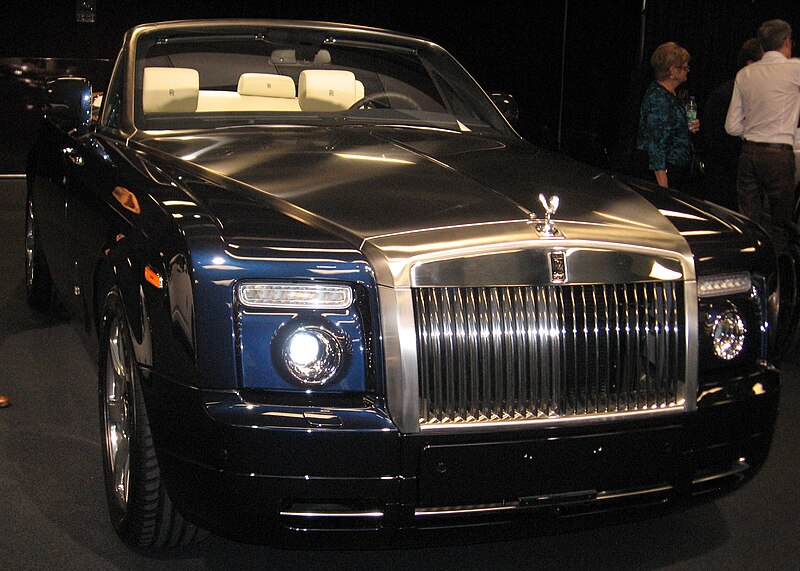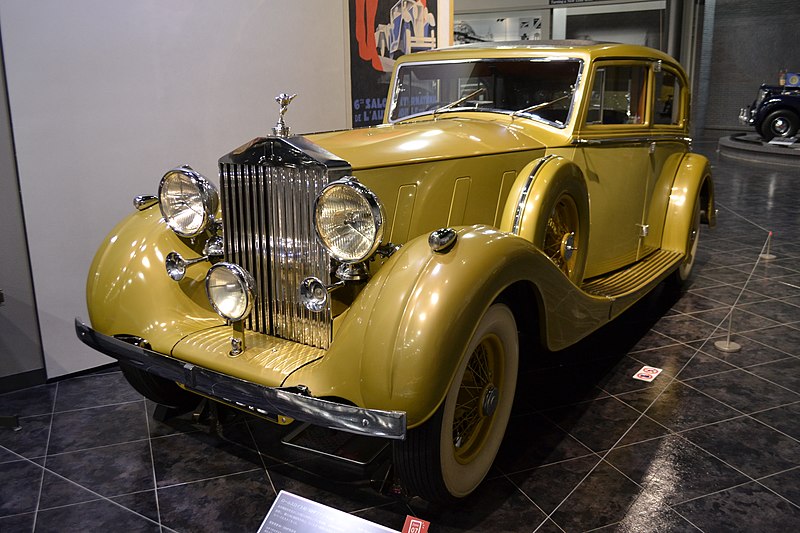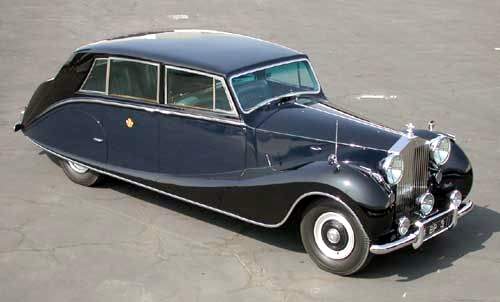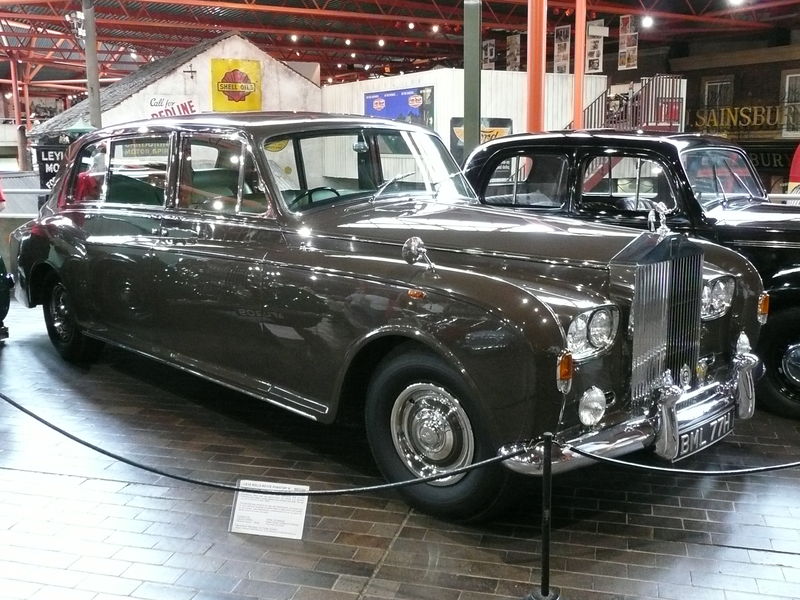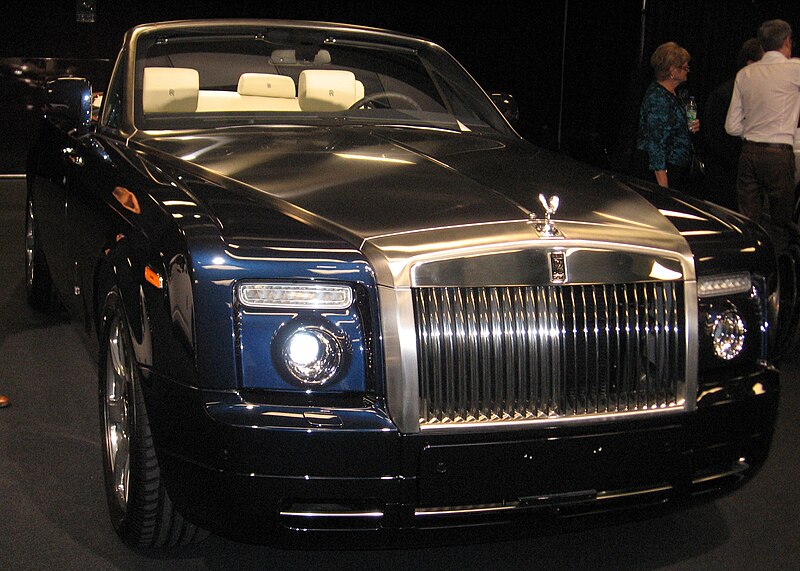In the world of luxury cars, the Rolls-Royce Phantom’s elegance, sophistication, and craftsmanship are unmatched. The story of the Rolls-Royce Phantom is one of relentless pursuit of perfection, a journey through time that intertwines with the evolution of modern luxury itself.
Known for crafting some of the most luxurious and sought-after vehicles in the world, Rolls-Royce is expected to deliver perfection. This is especially true for the Phantom, the flagship model of Rolls-Royce, synonymous with grandeur and prestige. These cars are more than just vehicles; they are symbols of power and wealth, often owned by royalty.
Guided by the iconic Spirit of Ecstasy that adorns its hood, the Phantom embodies sheer opulence and luxury, with ample opportunities for customization to suit its well-heeled clientele. Available in several versions, including the standard Phantom, an Extended Wheelbase, a Coupe, and a Drophead Coupe, Rolls-Royce is now gearing up to launch the eighth generation of this illustrious model. With the Phantom’s history nearing a century, it’s fascinating to see how it evolved. To understand this journey, we took a closer look at the Phantom’s past, exploring the seven generations that have defined its legacy since its debut in 1925.
Significance of the Rolls Royce Phantom
The importance of the Phantom in the automotive world cannot be overstated. It has set benchmarks for luxury and quality that have inspired and challenged automakers around the globe. The Phantom’s influence extends beyond its immediate industry—it has become a cultural icon, a symbol of status and prestige that resonates in luxury markets, in the realms of high fashion, and even in popular media. Its iconic grille and Spirit of Ecstasy hood ornament have become synonymous with a level of luxury that is sought after but rarely achieved.
Phantom I (1925-1931)
The Phantom I introduced in 1925 was a marvel of its time, signifying a new era in the luxury automobile sector. This model was developed to succeed the legendary Silver Ghost and did so with aplomb.
The Phantom I was powered by an advanced 7.7-liter six-cylinder engine, which was a significant upgrade from its predecessor. This engine offered an unprecedented smooth and quiet operation, earning the Phantom I the nickname “Silent Ghost.” The car’s chassis was also a work of art, providing a level of comfort and stability that was unheard of at the time. The body of the Phantom I was customizable, allowing owners to have their cars fitted with bespoke bodies crafted by coachbuilders, which added to the exclusivity and appeal of the vehicle.
The Phantom I was met with great acclaim. Its combination of superior engineering, unmatched craftsmanship, and luxurious design set a new standard in the automotive world. It quickly became the vehicle of choice for royalty, aristocrats, and celebrities, symbolizing status and prestige. The Phantom I not only solidified Rolls-Royce’s reputation as a maker of luxury cars but also redefined what a luxury car could be.
Phantom II (1929-1936)
In 1929, Rolls-Royce introduced the Phantom II, building on the success of its predecessor while making significant enhancements.
The Phantom II came with a more refined and improved chassis, which greatly enhanced the car’s handling and performance. The engine was also modified to deliver more power and efficiency. One of the most notable advancements was the implementation of a new pushrod-operated overhead valve mechanism, which was a departure from the side-valve design of the Phantom I.
The Phantom II was celebrated for its improved driving experience and its ability to maintain a high level of comfort even at higher speeds. It also featured a lower stance, giving it a more modern and sleek appearance. The car’s adaptability to various coachbuilders’ designs remained a key feature, allowing for a wide range of custom-built bodies that catered to the unique tastes of its affluent clientele.
Phantom III (1936-1939)
The Phantom III was the first Rolls-Royce to be equipped with a V12 engine. This 7.3-liter engine was a technological masterpiece of its time, offering unparalleled smoothness and power. The V12 engine marked a significant leap in automotive engineering, setting a new benchmark for luxury performance.
The Phantom III’s advanced engine, combined with its refined chassis and luxurious appointments, made it one of the most prestigious cars of its era. It was favored by the elite for its majestic presence and exceptional performance. The Phantom III further cemented Rolls-Royce’s reputation for producing the finest cars in the world, admired for their engineering excellence and opulent luxury.
Phantom IV (1950-1956)
Introduced in 1949, the Phantom IV stands as one of the most exclusive models in the history of Rolls-Royce.
Only 18 units of the Phantom IV were produced, making it one of the rarest Rolls-Royce models ever. This exclusivity was intentional, as the Phantom IV was made exclusively for royalty and heads of state. Its owners included Queen Elizabeth II and the Spanish royal family, which underscored the car’s status as a symbol of supreme luxury and exclusivity.
It was powered by a robust 5.7-liter eight-cylinder engine, which was both powerful and remarkably smooth. The design of the Phantom IV was majestic, featuring a stately grille and a commanding presence on the road. The interior was a realm of luxury, with lavish materials, intricate detailing, and custom features that catered to the tastes and requirements of its distinguished owners.
Phantom V (1959-1968)
The Phantom V represented a new era for Rolls-Royce as it combined the traditional luxury elements of its predecessors with more contemporary design cues. This model featured a more modern silhouette, with sleek lines and an updated, less upright grille. The Phantom V maintained the imposing presence characteristic of the Phantom series but in a form that resonated with the evolving tastes of the late 1950s and 1960s.
Under the hood, the Phantom V was equipped with a powerful 6.2-liter V8 engine, a notable upgrade from the straight-eight used in the Phantom IV. This engine provided a smoother and more efficient performance, enhancing the car’s drivability. In terms of comfort, the Phantom V saw significant advancements. It boasted improved suspension for a smoother ride, power steering, and automatic transmission, which were cutting-edge features at the time. The interior continued to exemplify luxury, with spacious and opulent cabins that offered unparalleled comfort and refinement.
Phantom VI (1968-1991)
The Phantom VI is the longest-running Phantom model. Produced from 1968-1991, it was a masterful blend of the timeless elegance of Rolls-Royce and the era’s technological advancements.
It retained the classic Rolls-Royce design elements, such as the iconic grille and Spirit of Ecstasy ornament, while introducing modern comforts and conveniences. The design was both stately and graceful, embodying the luxury and grandeur expected of a Phantom.
The Phantom VI’s majestic presence made it a popular choice for ceremonial and state occasions. It was a vehicle that commanded respect and admiration, making it ideal for high-profile events. Notably, a specially designed Phantom VI was presented to Queen Elizabeth II in 1977 for her Silver Jubilee, further cementing its status as a vehicle fit for royalty. The Phantom VI’s association with such prestigious events contributed significantly to its legendary status in the Rolls-Royce lineage.
The Impact of BMW’s Acquisition (1998)
The acquisition of Rolls-Royce by BMW in 1998 marked a pivotal moment in the history of the Phantom, ushering in a new era of technological advancement and design innovation.
Under BMW’s stewardship, Rolls-Royce underwent significant changes, both in terms of operation and the development of new models. BMW’s technological prowess and resources allowed for a rejuvenation of the Rolls-Royce brand, with a focus on modernizing the manufacturing process while retaining the bespoke craftsmanship that had always set Rolls-Royce apart.
During this time, there was substantial investment in research and development, leading to the introduction of advanced automotive technologies in subsequent Phantom models. BMW’s influence was evident in the improved performance, handling, and comfort features, aligning the Phantom with contemporary expectations of luxury while maintaining the distinctive Rolls-Royce character.
BMW’s acquisition set the stage for a new chapter in the Phantom’s history, one that would embrace the future without losing sight of the storied past.
Phantom VII (2003-2016)
The launch of the Phantom VII in 2003 marked a significant milestone in the evolution of this iconic series. This is the first Phantom model released by the company after it was acquired by BMW in 1998.
The Phantom VII introduced a plethora of modern technological features, setting new standards in automotive luxury. It was equipped with state-of-the-art systems for navigation, entertainment, and comfort, tailoring every aspect of the driving experience to the owner’s preferences. The bespoke options were unparalleled, ranging from custom paint colors and hand-stitched upholstery to personalized amenities, ensuring that each Phantom VII was as unique as its owner.
Under the bonnet, the Phantom VII boasted a powerful 6.75-liter V12 engine, delivering smooth and effortless power. This engine was not just about performance; it was engineered for silence and refinement, staying true to Rolls-Royce’s ethos of creating the ‘best car in the world.’ The car’s air suspension provided a ‘magic carpet ride,’ a phrase often used to describe the incredibly smooth ride quality that became a hallmark of Phantom VII.
Phantom VIII (2017-present)
In 2017, Rolls-Royce unveiled the Phantom VIII, a marvel of automotive engineering that further pushed the boundaries of luxury and technology.
The Phantom VIII incorporated advanced technological innovations, making it one of the most sophisticated cars on the market. Features like satellite-aided transmission, which used GPS data to pre-select gears based on the road ahead, and advanced driver-assistance systems demonstrated Rolls-Royce’s commitment to innovation. The level of customization available was expanded, offering an even greater range of bespoke options, from the Starlight Headliner, a bespoke feature that incorporates hundreds of tiny lights in the roof lining to create a starry night effect, to personalized art pieces within the dashboard.
Despite these modern advancements, the Phantom VIII remained true to the Rolls-Royce heritage. It maintained the classic design elements that have always defined the Phantom, such as the Pantheon grille and the Spirit of Ecstasy while evolving them in a contemporary manner. The interior continued to be a sanctuary of luxury, with the finest materials and craftsmanship evident in every detail.
Conclusion
The Phantom began as a bold statement of luxury and engineering prowess with the Phantom I and evolved through each generation, adapting to the changing tides of technology, design, and consumer expectations. Each iteration of the Phantom pushed the boundaries of what a luxury car could be, from the opulent and rare Phantom IV, reserved for royalty, to the technologically advanced and customizable Phantom VII and VIII.
Through the Phantom, Rolls-Royce has continually set the bar for luxury automobiles, influencing the industry not only through its innovations in comfort and performance but also in its steadfast commitment to craftsmanship and bespoke creation.

